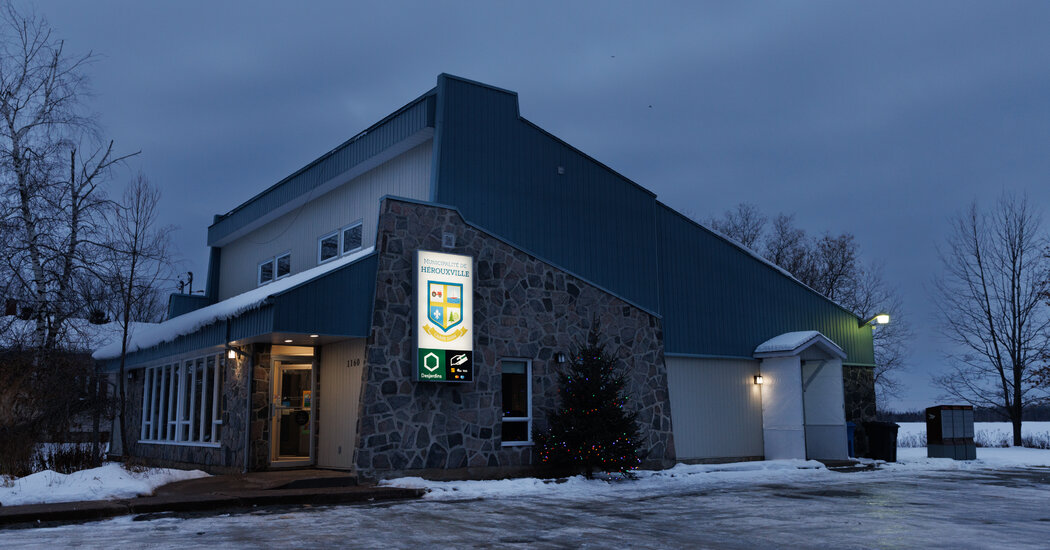For such a small town, Hérouxville, with a population of 1,336, has played a big role in Quebec’s history. In 2007, the town council passed a “code of conduct” for immigrants that warned against certain activities, like stoning women in public, burning them alive or treating them as slaves. Nobody had actually asked for the guidance, maybe because Hérouxville didn’t have any immigrants.
The code tapped into a deeply rooted cultural anxiety in the province’s French Québécois majority. Does immigration threaten the culture? Dilute it? Change it? For the better or for the worse?
The code of conduct — which elicited support, mockery and condemnation in the province — led to the creation of one of the most famous government commissions of the past generation: the so-called Bouchard-Taylor Commission, named after the two prominent academics who led it, Gérard Bouchard and Charles Taylor. The commission held public hearings throughout Quebec, which served as giant group therapy sessions for a province that had long anguished over questions of identity.
Quebec continues to wrestle with these issues to this day. But having played a small though pivotal role, Hérouxville slipped back into obscurity. The town briefly received some attention a decade after it passed its code as some Canadian news organizations took stock of the ways the town and the province had changed in the intervening years. The New York Times visited Hérouxville in 2018, but many declined to talk, including the mayor, Bernard Thompson, a onetime supporter of the code.
On my recent trip back to Hérouxville, I found that the town had made a 180 degree turn. I was greeted with open arms by Mr. Thompson, a welcome that the town now extends to immigrants. The county of Mékinac, which includes Hérouxville and nine other small towns, has put in place a comprehensive program to attract and integrate immigrants.
Read: How a Town Famous for Xenophobia Fell in Love With Immigrants
Sixty have settled in Mékinac in the past two years, a record for a county that once had almost no immigrants settle there. A shortage of workers is behind the county’s recent embrace of immigration, the same way it is behind Canada’s ambitious goal to attract 1.45 million immigrants over the next three years. But changing attitudes in Hérouxville and greater openness among younger people have also made it possible for officials to carry out this new pro-immigration policy.
Quebec remains divided over immigration. It was the most explosive issue in the recent provincial elections. The premier, François Legault, and other politicians described it as a threat to the French Québécois cultural identity, even as they acknowledged that the province’s economy needed immigrants. Hérouxville has made its choice and isn’t looking back. Whether its decision speaks to something larger, the way it did in 2007, remains to be seen.
This week’s Trans Canada section was compiled by Vjosa Isai, a reporter-researcher for The New York Times who is based in Toronto.
-
The Canadian author Louise Penny has written a book a year since 2005. After publishing two thrillers in 2021, she decided to take a year off from writing. Instead, she wrote a best seller.
-
The Netflix docu-series “Harry & Meghan” was released last week, offering a look at the lives of the Duke and Duchess of Sussex and their break with the royal family. In one episode, the couple suggests that King Charles III or his staff leaked a story that the couple was considering moving to Canada.
-
Gun violence is rising all over the United States, but children in big cities are more than three times as likely to be killed as children in small towns, according to a special project about child gun deaths by The New York Times Magazine. If the U.S. had gun death rates similar to those in Canada, about 26,000 fewer children would have died since 2010.
-
The company behind an app that uses artificial intelligence to create portraits is being criticized for mimicking the distinct styles of particular artists. A Vancouver-based storyboard artist, Jonathan Lam, said it amounted to having artwork stolen. “But I would argue that for us, our style is actually our identity,” he said.
-
Steve Williams, the Canadian-born computer animation innovator behind the 1993 film “Jurassic Park” and others, is the subject of a new documentary.
Norimitsu Onishi is a foreign correspondent for The New York Times, covering Canada from Montreal since August 2022.
How are we doing?
We’re eager to have your thoughts about this newsletter and events in Canada in general. Please send them to [email protected].
Like this email?
Forward it to your friends, and let them know they can sign up here.



